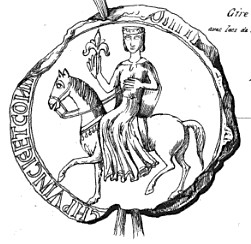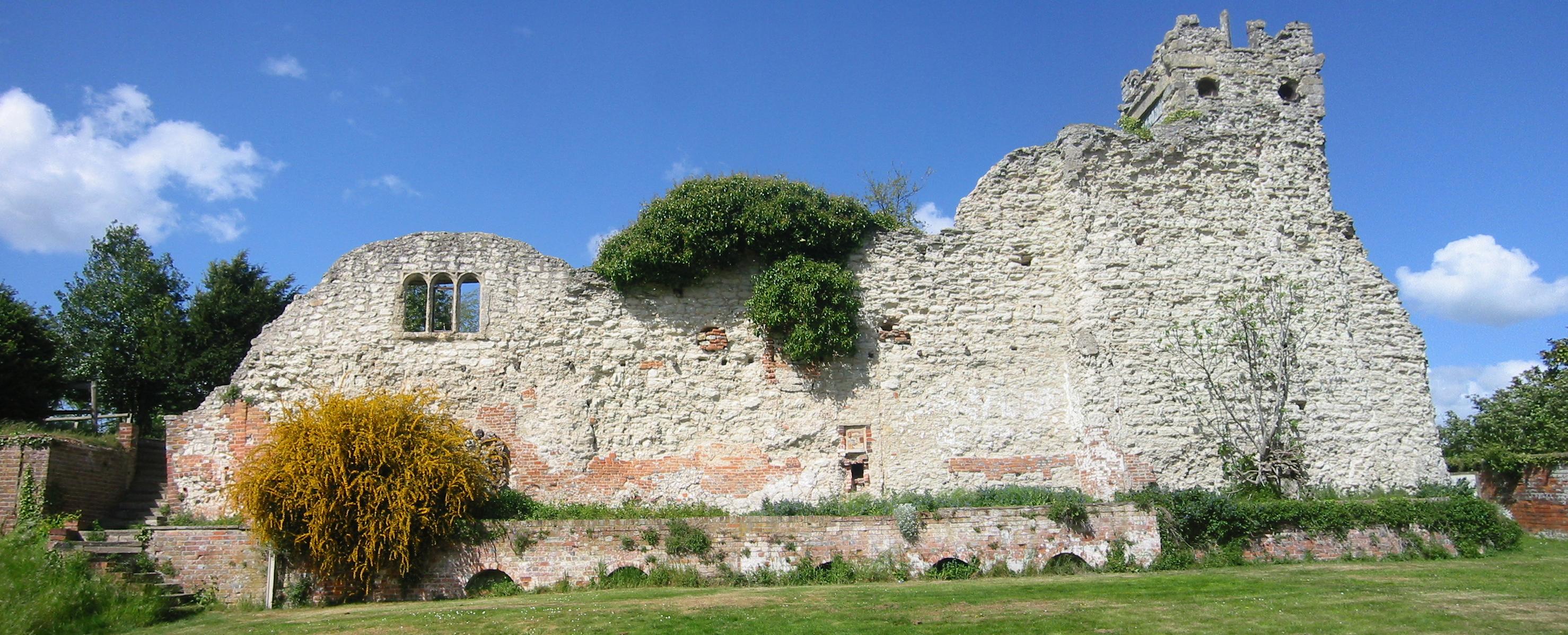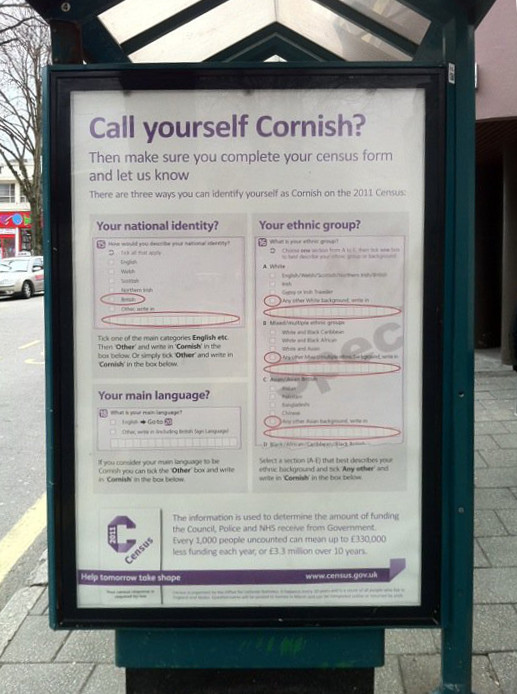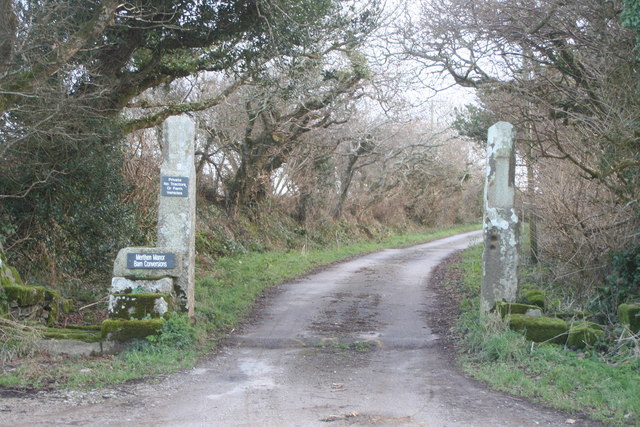|
Richard Of Cornwall
Richard (5 January 1209 – 2 April 1272) was an English prince who was King of the Romans from 1257 until his death in 1272. He was the second son of John, King of England, and Isabella, Countess of Angoulême. Richard was nominal Count of Poitou from 1225 to 1243, and he also held the title Earl of Cornwall from 1225. He was one of the wealthiest men in Europe and joined the Barons' Crusade, where he achieved success as a negotiator for the release of prisoners and assisted with the building of the citadel in Ascalon. Biography Early life He was born 5 January 1209 at Winchester Castle, the second son of John, King of England, and Isabella, Countess of Angoulême. He was made High Sheriff of Berkshire at age eight, was styled Count of Poitou from 1225 and in the same year, at the age of sixteen, his brother King Henry III gave him Cornwall as a birthday present, making him High Sheriff of Cornwall. Richard's revenues from Cornwall helped make him one of the wealthiest ... [...More Info...] [...Related Items...] OR: [Wikipedia] [Google] [Baidu] |
Earl Of Cornwall
The title of Earl of Cornwall was created several times in the Peerage of England before 1337, when it was superseded by the title Duke of Cornwall, which became attached to heirs-apparent to the throne. Condor of Cornwall * Condor of Cornwall, probably legendary Earl of Cornwall before the Conquest, said to have paid homage to William for the Earldom Earls of Cornwall, 1st creation (1068) * Brian of Brittany (c. 1040–1084 or 85), resigned c. 1072 Earls of Cornwall, 2nd creation (c. 1072) *Robert, Count of Mortain (c. 1038–1095), half-brother of William the Conqueror * William, Count of Mortain (1084–1140), peerage forfeit 1106 Cadoc II of Cornwall (c. 1106) *Cadoc II (or Candor), son of Cadoc of Cornwall Earls of Cornwall, 1st creation (revived 1140) *Alan (died 1146), nephew of Brian, deprived 1141 Earls of Cornwall, 3rd creation (1141) * Reginald de Dunstanville, Earl of Cornwall (died 1175), illegitimate son of King Henry I of England Earls of Cornwall, 4th crea ... [...More Info...] [...Related Items...] OR: [Wikipedia] [Google] [Baidu] |
Barons' Crusade
The Barons' Crusade (1239–1241), also called the Crusade of 1239, was a crusade to the Holy Land that, in territorial terms, was the most successful crusade since the First Crusade. Called by Pope Gregory IX, the Barons' Crusade broadly embodied the highest point of papal endeavor "to make crusading a universal Christian undertaking." Gregory IX called for a crusade in France, England, and Hungary with different degrees of success. Although the crusaders did not achieve any glorious military victories, they used diplomacy to successfully play the two warring factions of the Ayyubid dynasty (as-Salih Ismail in Damascus and as-Salih Ayyub in Egypt) against one another for even more concessions than Frederick II had gained during the more well-known Sixth Crusade. For a few years, the Barons' Crusade returned the Kingdom of Jerusalem to its largest size since 1187. This crusade to the Holy Land is sometimes discussed as two separate crusades: that of King Theobald I of Navarre, ... [...More Info...] [...Related Items...] OR: [Wikipedia] [Google] [Baidu] |
Wallingford Castle
Wallingford Castle was a major medieval castle situated in Wallingford in the English county of Oxfordshire (historically Berkshire), adjacent to the River Thames. Established in the 11th century as a motte-and-bailey design within an Anglo-Saxon ''burgh'', it grew to become what historian Nicholas Brooks has described as "one of the most powerful royal castles of the 12th and 13th centuries". Held for the Empress Matilda during the civil war years of the Anarchy, it survived multiple sieges and was never taken. Over the next two centuries it became a luxurious castle, used by royalty and their immediate family. After being abandoned as a royal residence by Henry VIII, the castle fell into decline. Refortified during the English Civil War, it was eventually slighted, i.e. deliberately destroyed, after being captured by Parliamentary forces after a long siege. The site was subsequently left relatively undeveloped, and the limited remains of the castle walls and the considerable ... [...More Info...] [...Related Items...] OR: [Wikipedia] [Google] [Baidu] |
Gilbert De Clare, 5th Earl Of Gloucester
Gilbert de Clare, 4th Earl of Hertford, 5th Earl of Gloucester, 1st Lord of Glamorgan, 7th Lord of Clare (1180 – 25 October 1230) was the son of Richard de Clare, 3rd Earl of Hertford (c. 1153–1217), from whom he inherited the Clare estates. He also inherited from his mother, Amice Fitz William, the estates of Gloucester and the honour of St. Hilary, and from Rohese, an ancestor, the moiety of the Giffard estates. In June 1202, he was entrusted with the lands of Harfleur and Montrevillers. Life In 1215 Gilbert and his father were two of the barons made Magna Carta sureties and championed Louis "le Dauphin" of France in the First Barons' War, fighting at Lincoln under the baronial banner. He was taken prisoner in 1217 by William Marshal, whose daughter Isabel he later married on 9 October, her 17th birthday. In 1223 he accompanied his brother-in-law, Earl Marshal, in an expedition into Wales. In 1225 he was present at the confirmation of Magna Carta by Henry III. ... [...More Info...] [...Related Items...] OR: [Wikipedia] [Google] [Baidu] |
Cornish People
The Cornish people or Cornish ( kw, Kernowyon, ang, Cornƿīelisċ) are an ethnic group native to, or associated with Cornwall: and a recognised national minority in the United Kingdom, which can trace its roots to the ancient Britons who inhabited southern and central Great Britain before the Roman conquest. Many in Cornwall today continue to assert a distinct identity separate from or in addition to English or British identities. Cornish identity has been adopted by migrants into Cornwall, as well as by emigrant and descendant communities from Cornwall, the latter sometimes referred to as the Cornish diaspora. Although not included as an tick-box option in the UK census, the numbers of those writing in a Cornish ethnic and national identity are officially recognised and recorded. Throughout classical antiquity, the ancient Britons formed a series of tribes, cultures and identities in Great Britain; the Dumnonii and Cornovii were the Celtic tribes who inhabited ... [...More Info...] [...Related Items...] OR: [Wikipedia] [Google] [Baidu] |
Geoffrey Of Monmouth
Geoffrey of Monmouth ( la, Galfridus Monemutensis, Galfridus Arturus, cy, Gruffudd ap Arthur, Sieffre o Fynwy; 1095 – 1155) was a British cleric from Monmouth, Wales and one of the major figures in the development of British historiography and the popularity of tales of King Arthur. He is best known for his chronicle '' The History of the Kings of Britain'' ( la, De gestis Britonum or ') which was widely popular in its day, being translated into other languages from its original Latin. It was given historical credence well into the 16th century, but is now considered historically unreliable. Biography Geoffrey was born between about 1090 and 1100, in Wales or the Welsh Marches. He had reached the age of majority by 1129 when he is recorded as witnessing a charter. Geoffrey refers to himself in his ''Historia'' as ''Galfridus Monemutensis'' (Geoffrey of Monmouth), which indicates a significant connection to Monmouth, Wales, and may refer to his birthplace. His works atte ... [...More Info...] [...Related Items...] OR: [Wikipedia] [Google] [Baidu] |
Tintagel Castle
Tintagel Castle ( kw, Dintagel) is a medieval fortification located on the peninsula of Tintagel Island adjacent to the village of Tintagel (Trevena), North Cornwall in the United Kingdom. The site was possibly occupied in the Romano-British period, as an array of artefacts dating from this period have been found on the peninsula, but as yet no Roman-era structure has been proven to have existed there. It was settled during the early medieval period, when it was probably one of the seasonal residences of the regional king of Dumnonia. A castle was built on the site by Richard, 1st Earl of Cornwall in the 13th century, during the High Middle Ages. It later fell into disrepair and ruin. Archaeological investigation into the site began in the 19th century as it became a tourist attraction, with visitors coming to see the ruins of Richard's castle. In the 1930s, excavations revealed significant traces of a much earlier high status settlement, which had trading links with the Medi ... [...More Info...] [...Related Items...] OR: [Wikipedia] [Google] [Baidu] |
Merthen Manor
Merthen Manor ( kw, Merdhin, meaning ''sea fort'') is a 16th-century manor house in west Cornwall, England, UK. For most of its history it has been in the ownership of the prominent Cornish family, the Vyvyan family. The house is set in over of woodland which, along with the shoreline of the Helford River, is designated as ''Merthen Woods'' Site of Special Scientific Interest (SSSI). History The land of Merthen was originally part of the manor of Winnianton, which was given to Richard, 1st Earl of Cornwall by his brother, Henry III, in 1225, who then swapped it with Gervase de Tintagel for Tintagel Castle. Ralph Reskymer obtained Merthen in the early part of the 15th century, and it became family seat of the Reskymers. The current manor house is thought to have been built in 1575 by John Reskymer and his wife Grace, due to their coat of arms over the entrance, although it may originate earlier and the coat of arms are an indication a remodelling or reduction. Grace died in 1 ... [...More Info...] [...Related Items...] OR: [Wikipedia] [Google] [Baidu] |
Brittany
Brittany (; french: link=no, Bretagne ; br, Breizh, or ; Gallo: ''Bertaèyn'' ) is a peninsula, historical country and cultural area in the west of modern France, covering the western part of what was known as Armorica during the period of Roman occupation. It became an independent kingdom and then a duchy before being united with the Kingdom of France in 1532 as a province governed as a separate nation under the crown. Brittany has also been referred to as Little Britain (as opposed to Great Britain, with which it shares an etymology). It is bordered by the English Channel to the north, Normandy to the northeast, eastern Pays de la Loire to the southeast, the Bay of Biscay to the south, and the Celtic Sea and the Atlantic Ocean to the west. Its land area is 34,023 km2 . Brittany is the site of some of the world's oldest standing architecture, home to the Barnenez, the Tumulus Saint-Michel and others, which date to the early 5th millennium BC. Today, the h ... [...More Info...] [...Related Items...] OR: [Wikipedia] [Google] [Baidu] |
Poitou
Poitou (, , ; ; Poitevin dialect, Poitevin: ''Poetou'') was a Provinces of France, province of west-central France whose capital city was Poitiers. Both Poitou and Poitiers are named after the Pictones Gallic tribe. Geography The main historical cities are Poitiers (historical capital city), Châtellerault (France's kings' establishment in Poitou), Niort, La Roche-sur-Yon, Thouars, and Parthenay. History A marshland called the Poitevin Marsh (French ''Marais Poitevin'') is located along the Gulf of Poitou, on the west coast of France, just north of La Rochelle and west of Niort. At the conclusion of the Battle of Taillebourg in the Saintonge War, which was decisively won by the French, King Henry III of England recognized his loss of continental Angevin Empire, Plantagenet territory to France. This was ratified by the Treaty of Paris (1259), Treaty of Paris of 1259, by which King Louis annexed Duchy of Normandy, Normandy, Maine (province), Maine, Duchy of Anjou, Anjou, and P ... [...More Info...] [...Related Items...] OR: [Wikipedia] [Google] [Baidu] |
High Sheriff Of Cornwall
Sheriffs and high sheriffs of Cornwall: a chronological list: The right to choose high sheriffs each year is vested in the Duchy of Cornwall. The Privy Council, chaired by the sovereign, chooses the sheriffs of all other English counties, other than those in the Duchy of Lancaster. This right came from the Earldom of Cornwall. In the time of earls Richard and Edmund, the steward or seneschal of Cornwall was often also the sheriff. Sheriffs before the 14th century 14th-century sheriffs 15th-century sheriffs {{columns-list, colwidth=30em, *1400–1404: Henry of Monmouth{{sfn, Hughes, 1898, p=21{{sfn, Polsue, 1872, p=122{{sfn, Polwhele, 1816, p=106 **28 October 1400: Sir William Marney undersheriff{{sfn, Hughes, 1898, p=21 **Michaelmas 1401: Sir John Trevarthian undersheriff{{sfn, Hughes, 1898, p=21 **Easter 1402: Sir John Arundell undersheriff,{{sfn, Hughes, 1898, p=21 of Lanherne **6 October 1402: William Bodrugan undersheriff{{sfn, Hughes, 1898, p=21 **22 October ... [...More Info...] [...Related Items...] OR: [Wikipedia] [Google] [Baidu] |



_(8634691430).jpg)


